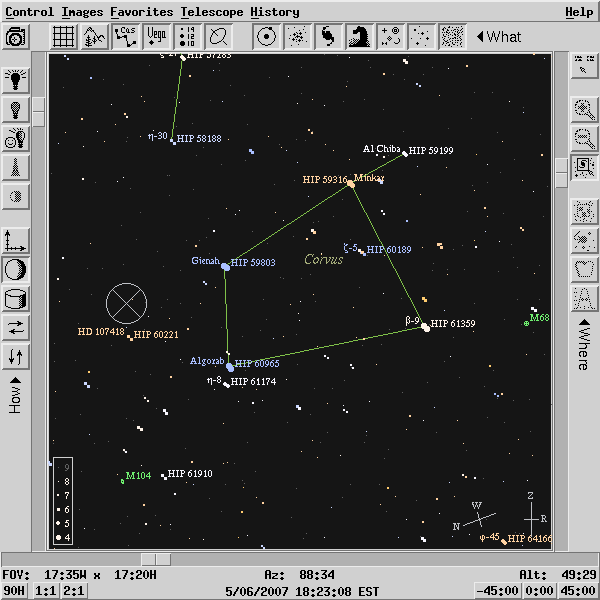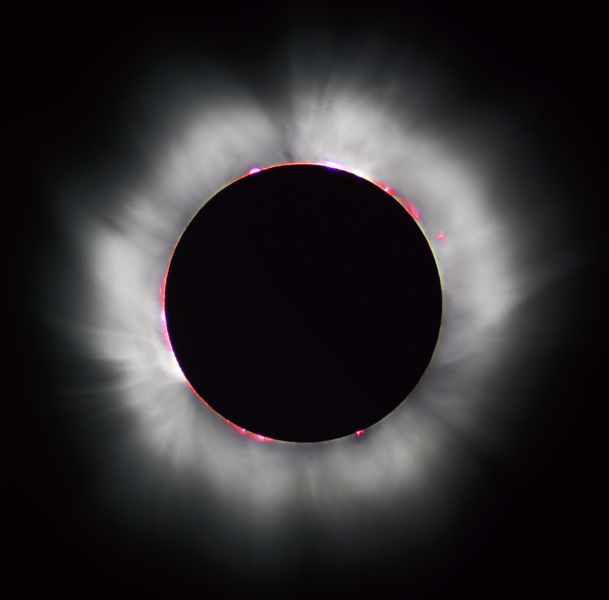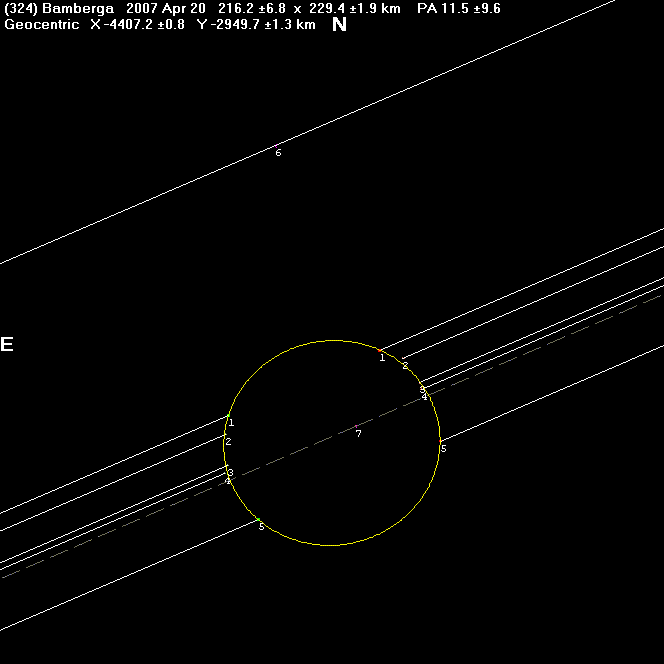- Sun 06 May 2007
- Astronomy
- #Astronomy
 It
is 20 April in the
Canberra
region. The autumn evening temperature is rapidly dropping toward what
will be the lowest temperature of April: 3.6 deg. Celsius. Despite the
conditions, five amateur astronomers are setting up across the region to
watch the rather nondescript star
HIP 59807
in the constellation
Corvus
for a quarter hour or so. They hope to catch an event a few seconds
long. What is this event and why would anyone do this?
It
is 20 April in the
Canberra
region. The autumn evening temperature is rapidly dropping toward what
will be the lowest temperature of April: 3.6 deg. Celsius. Despite the
conditions, five amateur astronomers are setting up across the region to
watch the rather nondescript star
HIP 59807
in the constellation
Corvus
for a quarter hour or so. They hope to catch an event a few seconds
long. What is this event and why would anyone do this?
We all know that stars twinkle, their brightness varies a little as the atmosphere disturbs our view. There are, however, occasions when a star will completely disappear and reappear a few seconds later. These events are called occultations although a related term might be more familiar; eclipse.
 Astronomical
occultations occur when an object passes in front of of another
completely obscuring it from view. For example, a total solar eclipse is
the occultation of the
Sun by our
Moon. The
occulting body might be the Moon, a planet or one of its moons, or an
asteroid or other minor body. In the case of our Moon, it is happy
coincidence that its size almost perfectly matches the Sun's size when
viewed from their respective distances. This allows the 3,474 kilometre
diameter Moon to completely blot out the 1,392,000 kilometre diameter
Sun's glare allowing the faint
corona to
shine through.
Astronomical
occultations occur when an object passes in front of of another
completely obscuring it from view. For example, a total solar eclipse is
the occultation of the
Sun by our
Moon. The
occulting body might be the Moon, a planet or one of its moons, or an
asteroid or other minor body. In the case of our Moon, it is happy
coincidence that its size almost perfectly matches the Sun's size when
viewed from their respective distances. This allows the 3,474 kilometre
diameter Moon to completely blot out the 1,392,000 kilometre diameter
Sun's glare allowing the faint
corona to
shine through.
 Far
less obvious occultations occur from time to time when an asteroid in
the solar system's asteroid belt passes between us and the light from a
distant star. Stars are tiny points of light in the night sky, so we
cannot expect to see things like the corona and other effects we see
during solar eclipses. The best we can hope for is that the star will
temporarily disappear from view, or significantly dim, while the
asteroid passes in front. On 20 April this occurred when asteroid 324
Bamberga
occulted HIP 59807. Prior to the event, predictions had been made using
the known, fixed (almost, but that's another post) position of the star
and the known orbit of the asteroid. These calculations allow plotting
of the predicted path of the
'shadow'
over the surface of the Earth with known degree of confidence.
Far
less obvious occultations occur from time to time when an asteroid in
the solar system's asteroid belt passes between us and the light from a
distant star. Stars are tiny points of light in the night sky, so we
cannot expect to see things like the corona and other effects we see
during solar eclipses. The best we can hope for is that the star will
temporarily disappear from view, or significantly dim, while the
asteroid passes in front. On 20 April this occurred when asteroid 324
Bamberga
occulted HIP 59807. Prior to the event, predictions had been made using
the known, fixed (almost, but that's another post) position of the star
and the known orbit of the asteroid. These calculations allow plotting
of the predicted path of the
'shadow'
over the surface of the Earth with known degree of confidence.
 Amateur
astronomers like these events because it allows them to measure the
asteroid's size and get an idea of its shape. If you measure the time
that the star is blotted out you can calculate the diameter of the
asteroid. By spreading out across the expected path of the occultation
each observer gets a slightly different line of sight and slice through
the asteroid's body. Combining the measurements allows a shape to be
derived. For this event five Canberra area observers saw the star
disappear, and two in New Zealand did not see the event. Dave Gault's
video
of the event can be seen on YouTube. Assuming a roughly elliptical
shape, this occultation gave 216.2 by 229.4 km as the best-fit
dimensions for Bamberga. Even failing to see the star disappear is
useful; if the observer's point of view passes just outside the body of
the asteroid. Such observations can be used to better refine orbital
information and put an upper bound on the object dimension.
Amateur
astronomers like these events because it allows them to measure the
asteroid's size and get an idea of its shape. If you measure the time
that the star is blotted out you can calculate the diameter of the
asteroid. By spreading out across the expected path of the occultation
each observer gets a slightly different line of sight and slice through
the asteroid's body. Combining the measurements allows a shape to be
derived. For this event five Canberra area observers saw the star
disappear, and two in New Zealand did not see the event. Dave Gault's
video
of the event can be seen on YouTube. Assuming a roughly elliptical
shape, this occultation gave 216.2 by 229.4 km as the best-fit
dimensions for Bamberga. Even failing to see the star disappear is
useful; if the observer's point of view passes just outside the body of
the asteroid. Such observations can be used to better refine orbital
information and put an upper bound on the object dimension.
Occultations are one area where amateurs can add useful data to the scientific pool. Science you can be involved in is always of interest to me.
Other Bits
The HIP 59807 designation comes from the catalogue constructed by the Hipparcos mission. The two plots used here were shamelessly lifted from:
